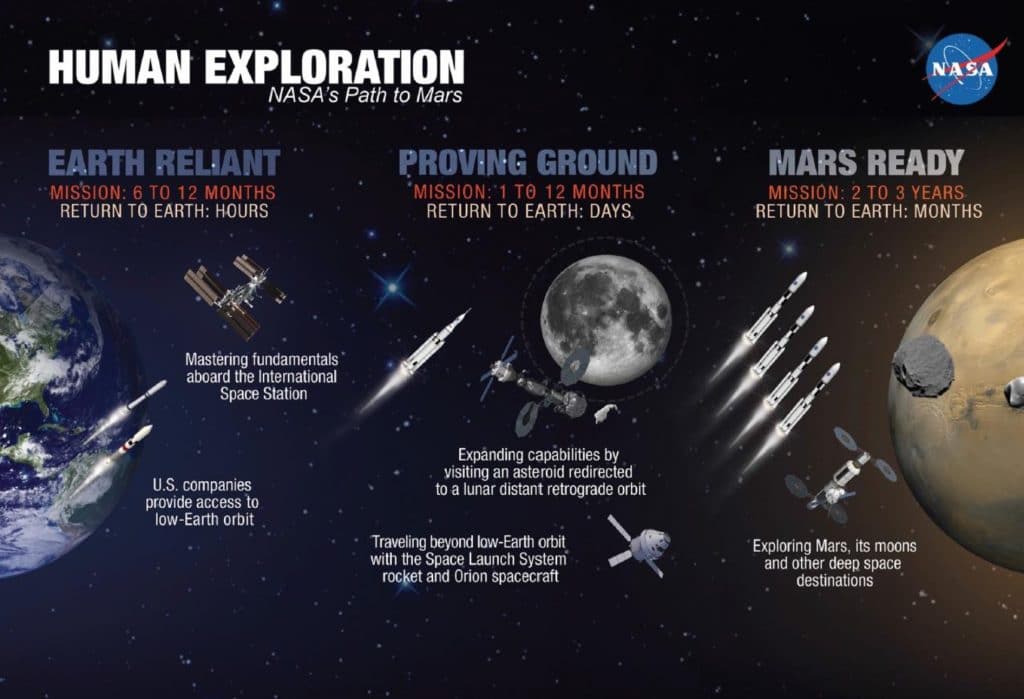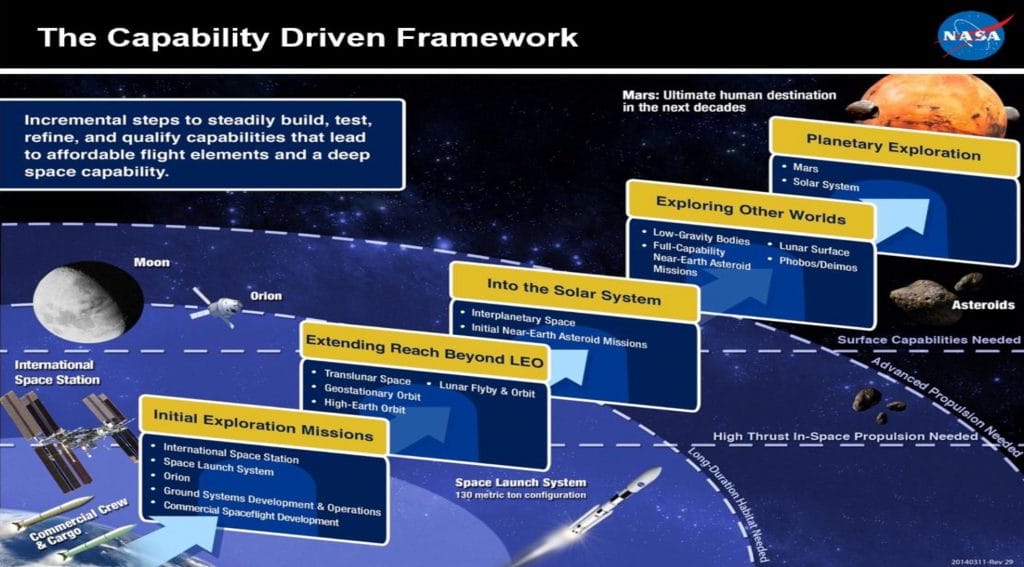When the first humans set foot on Mars to establish an outpost for future human colonization, we won’t have Matt Damon to show us the way to survive. We’ll need a clear plan.
Nerds on Earth need to become Nerds in Space, and establishing an initial outpost is a critical step in ultimately creating a long-lasting, sustainable living environment on Mars, making humans a multi-planet species.
On April 15, 2010, in a speech at NASA’s Kennedy Space Center, President Obama stated, “Fifty years after the creation of NASA, our goal is no longer just a destination to reach. Our goal is the capacity for people to work and learn and operate and live safely beyond the Earth for extended periods of time, ultimately in ways that are more sustainable and even indefinite. And in fulfilling this task, we will not only extend humanity’s reach in space – we will strengthen America’s leadership here on Earth.”
Establishing an Outpost on Mars
First, we need to establish a beachhead on Mars. As of this writing, there have only been unmanned missions to Mars, but I don’t want to be dismissive in using the word “only.” Those unmanned missions are an important achievement and have taught us a great deal.
If fact, they are the critical “proving ground” for the whole idea of a human settlement on Mars. Shortly after President Obama’s words, NASA rolled out their Capability Driven Framework (CDF) for human space exploration to prove if this wild idea was wild after all.
This is the guiding philosophy of the CDF:
- Leverage strong linkage to current investments across International Space Station (ISS), all systems in development, and science.
- Develops Earth independence for long-term human presence through a series of steps, from LEO, through cis-lunar space, to the Mars surface.
- Exploration enables science along the path.
- Infrastructure is incrementally created on exploration missions.
- Reflects the reality of annual budgets.
- Emphasizes prepositioning and reuse of systems
- Incorporates flexibility to adjust to changing priorities across the decades.
Nerds on Earth has summarized the above mentioned budgets, as well as the stepping-stone approach, so we’ll now focus on infrastructure and system reuse.
Reduce / Reuse / Recycle
Elon Musk is known for Telsa, but he’s also the guy behind SpaceX. Musk unveiled SpaceX’s plan for establishing an initial Mars colony in 2016 and it was predicated on reusable rockets that drove the overall cost down.
He calls the SpaceX reusable rocket-and-spaceship combo the Interplanetary Transport System (ITS) and it will be powered by SpaceX’s Raptor engine, which is more powerful even than NASA’s famous Saturn V moon rocket.
ITS rockets will launch spaceships into Earth orbit, then come back down for a pinpoint landing about 20 minutes later right back on the pad from where it launched, a feat that has been GIF’d a hundred times.
The Raptor rockets will be designed to fly about 1,000 times each. More importantly, they’ll transport critical materials to the 100 spaceships that are hanging out in orbit. Those ships will then depart en masse when Earth and Mars align favorably, an event that happens once every 26 months.
The ships would also fly back from Mars, using their nine Raptor engines and methane-based propellant that was manufactured on the Red Planet. The hope is that each ITS ship could make 12 to 15 deep-space journeys during its operational life, a reusability being key to making Mars colonization affordable.
Us Earth Nerds don’t have the hyperdrive technology of the Millennium Falcon nor engineers with the mechanical aptitude of Chewie, so with our present thruster technology this is a trip that will take months, not days.
But, eventually, Musk envisions 1,000 or more ITS spaceships, each carrying 100 or more people at a cost of $200,000 or so per person, leaving Earth orbit during each of these Mars windows. That could conceivably get 1 million people to Mars within the next 100 years.
Hearing Crickets in the Vacuum of Space

But what will humans need to go from Earth reliant to Mars ready? Well, long stays on Mars involves living off resources that already exist on the Red Planet instead of relying on resupply ships from Earth. So, what will those 1 million people eat once they get there? Matt Damon’s potatoes?
The five major consumable resources that a Martian settlement would need includes energy, water, oxygen, construction material, and food. The first four are abundant on Mars.
- Solar power, supplemented with nuclear-fission reactors, can provide the energy necessary to establish an initial outpost on Mars.
- Recycled human fluids and ice and hydrated minerals on Mars are sources of water.
- Carbon dioxide can get converted into oxygen.
- Martian soil can be readily made into bricks for building supplies, all done robotically.
In comparison, there is no food naturally available on Mars. Further, there is no easy way to create it from any raw materials on the Red Planet. And apologies to Firefly, but nobody is transporting beef cows across space.
I encourage you to click through to the source material below to read about the challenges of growing low calorie vegetables in Martian soil. It’s incredibly interesting, out shown only in the acting chops of Matt Damon.
So, rather than watery vegetables, the solution is crickets and lab-grown meat. “Cellular agriculture,” food derived from cells grown in lab dishes, is a burgeoning market. Everything from algae to meat and fish to cow-less milk and chicken-less eggs are currently possible. And the refinements in such technology has already driven down the costs of a cultured meat burger from $325,000 to $11 per patty in the last two years.
But if humans could get over their gag reflexes for insect consumption, the answer to feeding a burgeoning Martian colony is crickets. Insect farms provide a lot of calories per unit land while using relatively minor amounts of water and feed. And cricket flour – yes, cricket flour – could potentially be incorporated and hidden in many different recipes, providing an excellent source of protein.
Read More of our “Nerds in Space” Series
- Intro
- Establishing a Budget and Timeline
- The Stepping Stones that Will Take Us to Mars
- Traveling far
- Establishing an outpost.
- Terraforming a home.


